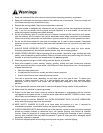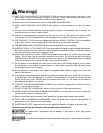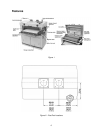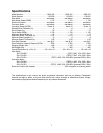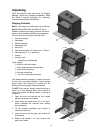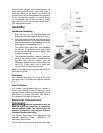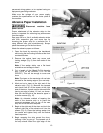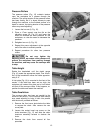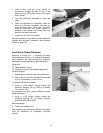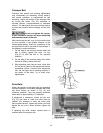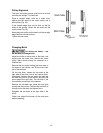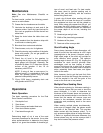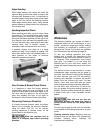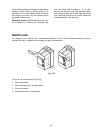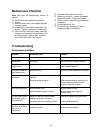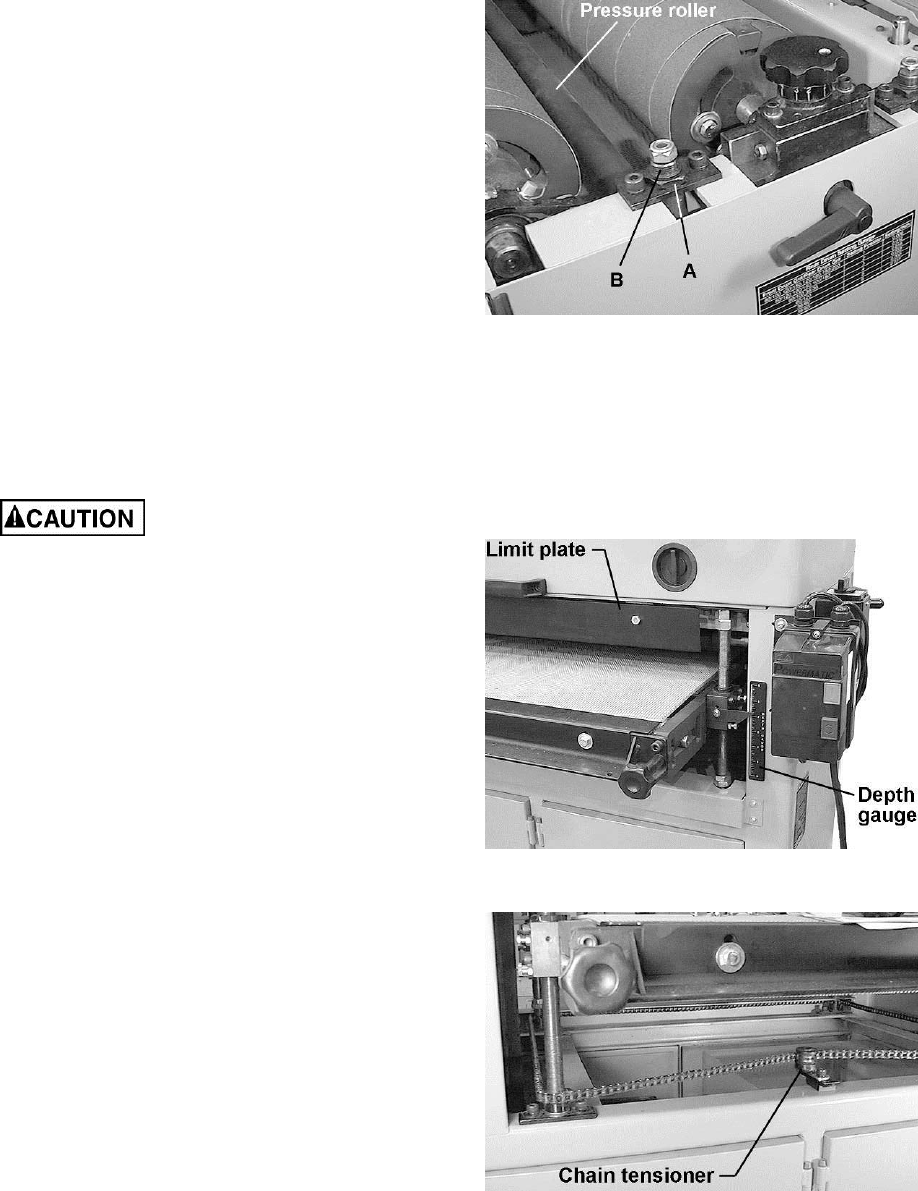
12
Pressure Rollers
The pressure rollers (Fig. 15) maintain tension
upon the workpiece as it passes through the
machine. The spring tension of the pressure rollers
has been factory set. If a board refuses to pass
through the machine, or the finished surface of a
board is uneven, the spring tension of the pressure
rollers may need adjusting.
1. Loosen the hex nut (A, Fig. 15).
2. Place a 17mm wrench over the flat on the
adjusting screw (B, Fig. 15) and lower the
screw to increase the roller pressure on the
workpiece; or raise the screw to decrease the
pressure.
3. Retighten hex nut (A, Fig. 15).
4. Repeat this same adjustment at the opposite
end of the roller to maintain parallel.
5. Repeat procedure for other two pressure
rollers.
Do not over tighten the
adjusting screw, as excess roller pressure will
prevent the workpiece from passing through
the machine, and may cause the conveyor belt
to stop.
Table Height
Rotate the handwheel until the depth gauge
(Fig. 16) reads the appropriate depth. One revolu-
tion of the handwheel moves the table approxim-
ately 0.11”.
A limit plate (Fig. 16) is mounted to the front of the
sander. If the table has been set too high, the
workpiece will contact this plate and a limit switch
will shut off the conveyor table. If this happens, re-
position the table and restart the machine.
Table Parallelism
The conveyor table has been set parallel to the
drums at the factory. If the conveyor table should
ever need adjusting to bring it back into parallel
with the drums, proceed as follows:
1. Remove the front cover plate below the table
to expose the chain. Also remove the rear
cover plate.
2. Loosen the socket head cap screw on the
chain tensioner (Fig. 17) and slide the chain
tensioner assembly forward to slacken the
chain.
3. Remove the chain from around all four
sprockets.
Figure 15
Figure 16
Figure 17



